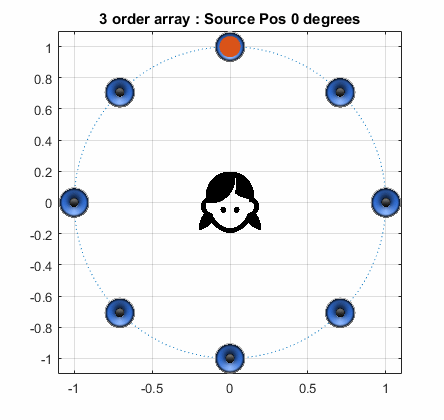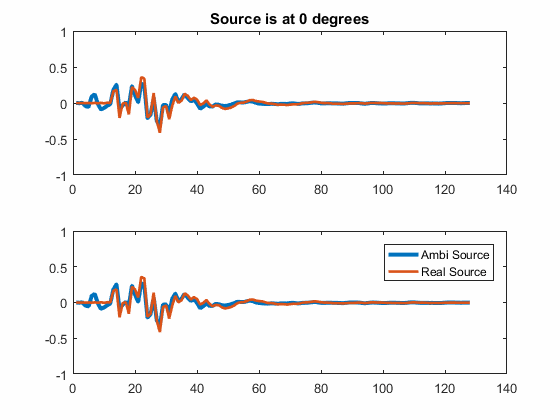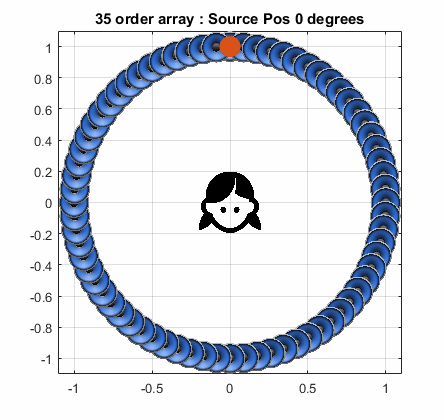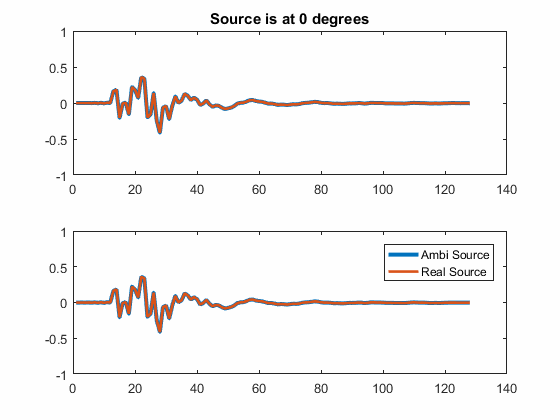-
Notifications
You must be signed in to change notification settings - Fork 544
New issue
Have a question about this project? Sign up for a free GitHub account to open an issue and contact its maintainers and the community.
By clicking “Sign up for GitHub”, you agree to our terms of service and privacy statement. We’ll occasionally send you account related emails.
Already on GitHub? Sign in to your account
[REQUEST] add 4th order (or more) ambisonics #1031
Comments
|
Higher orders is something that could be nice to support. For fourth order, the main issue is being able to take advantage of it; speaker layouts aren't typically dense enough to utilize higher orders, for instance a 7.1 surround sound setup doesn't really benefit from even third order since there's not enough speakers to resolve the spatial detail, without succumbing to problems ambisonic panning attempts to address (sounds sticking to speakers, or having holes in between, as it pans around). HRTF may have more room to benefit with denser datasets, though less dense datasets will have the same problem if the virtual speakers don't line up well with the responses' locations. If there are ways to improve the output with higher orders despite having a low density of speakers, I'm not aware of it. The main use would be with outputting it directly to some external processor that can make use of the spatial resolution, and/or saving for future-proofing. Orders above 4th may need more work to support, as there are places in the library that expect to use bits of an integer in relation to ambisonic channels. 32-bit integers allow up to 32 channels, which is fine for 4th order at 25 channels, while 5th order is 36, 6th order is 49, and 7th order is 64, which would need 64-bit integers. The panning coefficients for the higher order channels will also be needed, which I currently only have up to 4th order noted down. The NFC coefficients will also need expanding for higher orders, presuming the NFC filters will even still work at such higher orders. |
|
Doesn't Speaking of, how dense would the HRTF need to be to reproduce the equivalent of 35th Order Ambisonics? 🤔 |
Yes, but full HRTF mode adds more CPU cost per source than using the
Full 3D 35th order would need more than 1296 channels (it's not clear exactly how many, but more is better as long as it's not overboard). But just as importantly, they have to be placed in an appropriate layout, which would need a decent amount of precision. Concentric rings at fixed elevation and azimuth steps, like mhr files use, aren't great for that without the step size being very low (only a few degrees), otherwise multiple channels would end up at the same location. |
|
For even ITU 5.1 , 4th/5th order may be beneficial since the angle between L & C is 30deg, but the resolution of 3oa is only 45deg. 5oa has resolution of 30deg. |
Are we talking like significant usage even on modern desktop CPUs or just low-end/mobile devices? 🤔
Dang, I just noticed that SADIE uses just ~1/3 IRs of the total ~3K, because of incompatible layout, I presume 😔 On a side note, could OpenAL Soft add Higher-Order Ambisonics decoding to apps like sView (limited to 1OA) or should every app add HOA decoding on its own like Virtual Home Theater which already supports up to 3OA? |





for both HRTF and speaker layout
The text was updated successfully, but these errors were encountered: